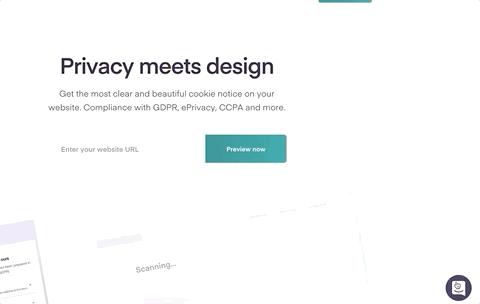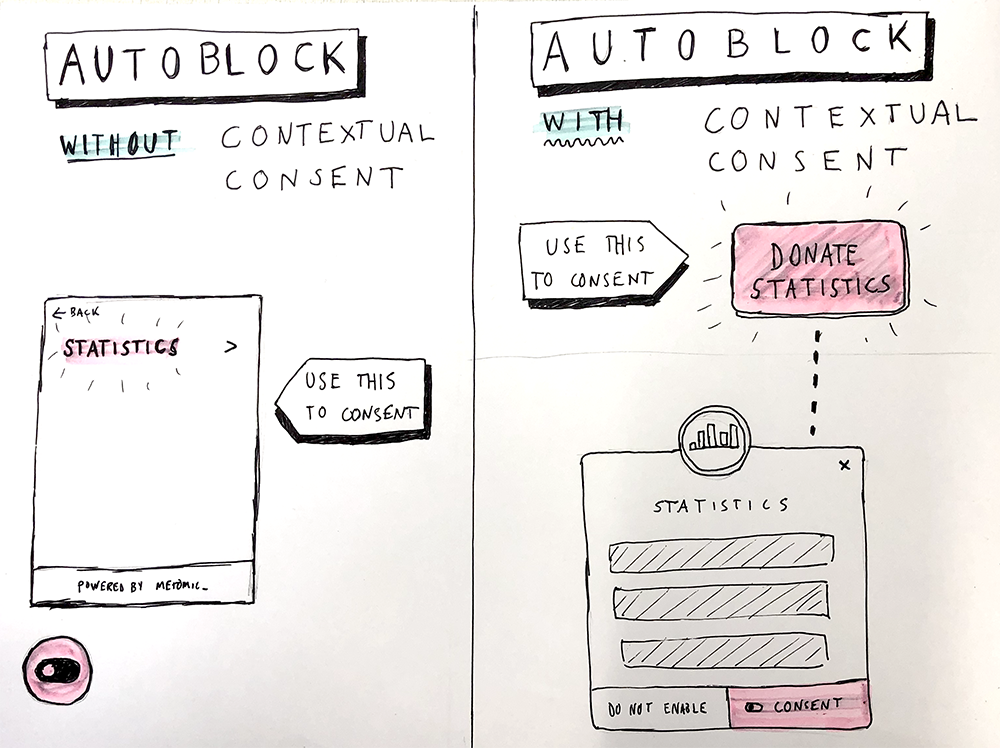A non-intrusive way for your users to give consent, as and when they need to
Contextual Consent will allow your users to consent to cookies as and when they need to — not all at once upon visiting your site. This adheres much more closely to GDPR standards because your users will be better informed of what they are consenting to 🥳.
Have a look at it in action: we’re using Contextual Consent on a homepage right now to manage consent for Intercom.

At the moment, there are no other solutions quite like this out there — we’ve built this because we want the web to be good for everyone, not just the small percentage of savvy internet users who know how to instal browser extensions.
What is Contextual Consent?
To understand this, put yourself in the user’s shoes. You visit a page that is supposed to have a YouTube video on it, except that you opted out of cookies, without which YouTube can’t function. Now you don’t even realise there is meant to be a video on this page.
With Contextual Consent you can see that there’s a video there, even if the request has not been made to load it. No request will be made until you click our ‘play video’ button. When you hover, a tooltip will tell you that playing the video will drop cookies.
What you see in place of the video before it loads is part of the Contextual Consent feature — it was designed by Company, and the preview image you see is the actual YouTube thumbnail.
Videos are just one thing — we’ve built Contextual Consent so that you can use it with a wide range of third-parties. On this first release, that includes:
- Live chat: Intercom and Crisp
- Social media buttons: Facebook, Twitter, LinkedIn
- Media: Soundcloud, Youtube, Spotify, Giphy
- Other stuff: Google Maps and Typeform
- Over to you: You can build whatever you want!
This list is just the beginning — we will add more providers in the future. In this first release we tried to capture as many widely used third-parties as we could think of. You can also build your own very easily. We’re releasing documentation to enable any developer to create new Contextual Consent element(s) to suit their needs.
Contextual Consent can be combined with Autoblock to achieve great things
We released a beta version of Autoblock late last year. Perhaps you’re using it to block certain scripts already — maybe for Google Analytics, which your users can control with the cookie widget. With Contextual Consent, you could take Google Analytics out of the widget, and make something like a ‘donate statistics’ button.
 Contextual Consent gives you more freedom on how you can gather consent from your users — you no longer have to stuff everything into our cookie widget
Contextual Consent gives you more freedom on how you can gather consent from your users — you no longer have to stuff everything into our cookie widget
If you have Autoblock enabled, it may be blocking things such as a Youtube video — with Contextual Consent it will do the same without making your site look broken; it generates a nifty preview in place of a video (or whatever you’ve embedded) without interrupting the visual flow of your site.
That’s because the preview generated by Contextual Consent looks similar enough to a Youtube video so that your users will know what it is, but different enough so that they know it’s a preview.
What we learned from making this
One of the most frequent conversations we had was what and who to build Contextual Consent for. In this first release we wanted to keep it simple, but start with enough stuff that it would actually be useful. What kinds so of third-parties do people regularly use? While building, three main camps presented themselves:
- Embedded media: bloggers and other publishers routinely use videos or embed music into their content — they also use gifs to add visual interest, and Giphy makes a lot of requests so it was a no-brainer to include it
- Social media buttons: show us a publishing platform/blog/new site that does not have a Facebook like button or share buttons
- Customer engagement: things like chat widgets for customer support, an embedded Google map so people can see where you’re based, or a Typeform for surveys and feedback.
We also had to think a lot about the design — the challenge was to design interruptions that are not annoying, but hold your attention for long enough to get important information across.
Further to this, the copy for a modal needs to be different to what you see in the cookie widget. When a user clicks on an Intercom icon on your site, what they expect to see is an Intercom chat window, and not a modal explaining that Intercom drops cookies — this means that the usage description is slightly different depending on whether you’re reading it in the widget or a modal, because both of those experiences are different. The text is tweaked, depending on what you’re looking at.
👩💻 That’s it for now — this feature is about to go live on Product Hunt, so watch this sapce.
